Top Findings From The High Cost of Invisibility for Multi-Location Enterprises
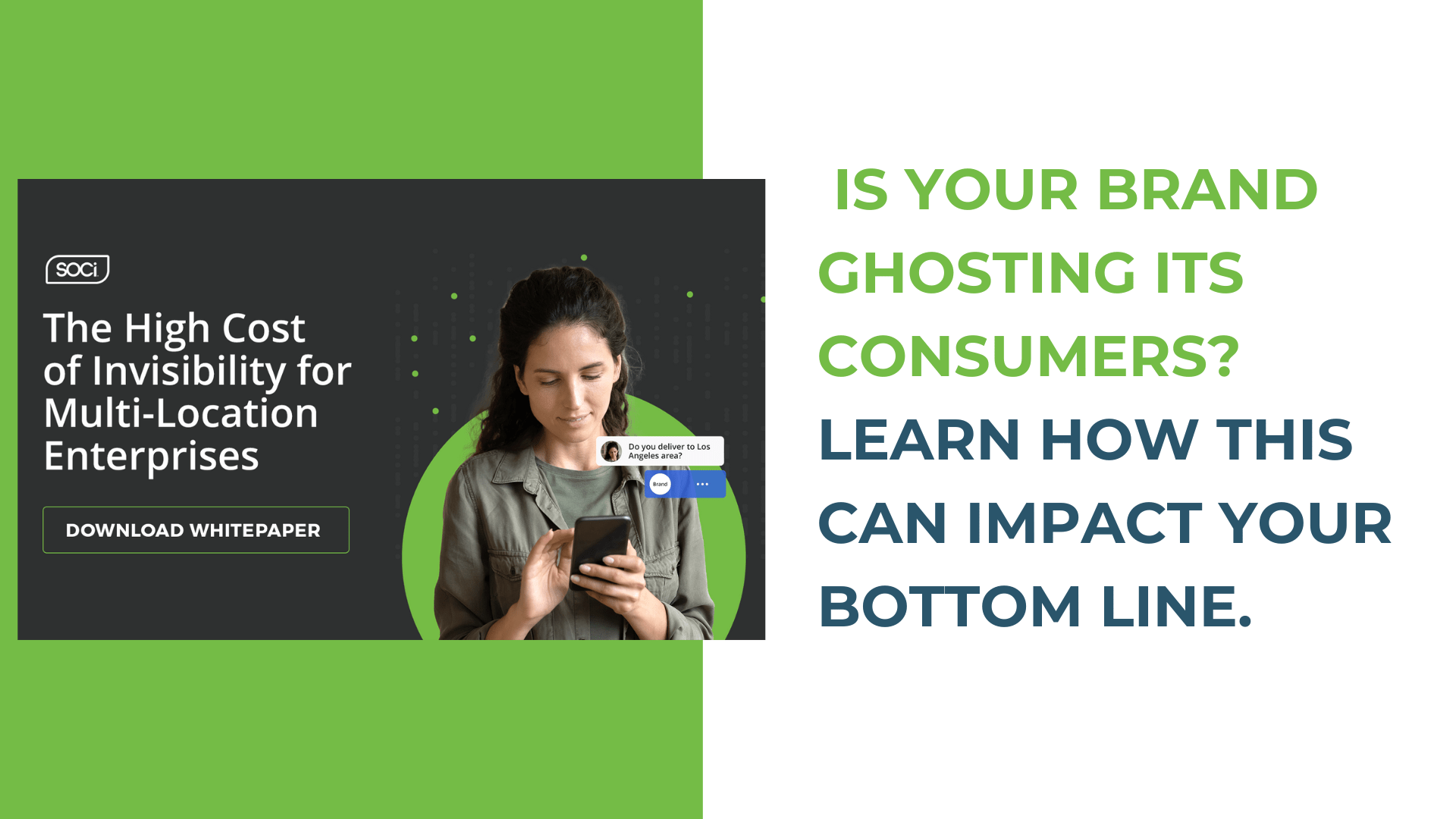
Top Findings From The High Cost of Invisibility for Multi-Location Enterprises
As a multi-location enterprise, you must show up for your local customers. In 2022, U.S. e-commerce sales surged to more than $1 trillion. Additionally, more than 1 billion searches in the United States containing the phrase “near me” are used monthly.
The data speaks for itself — consumers are searching for businesses at the local level and making purchase decisions online. Data from our 2023 Local Visibility Index (LVI), formerly known as our Localized Marketing Benchmark Report, found that brick-and-mortar brands struggle to keep up with online expectations for engagements, ultimately ghosting consumers.
Using data from our 2023 LVI, we developed The High Cost of Invisibility for Multi-Location Enterprises white paper. This piece dives into how brands ghost local consumers on digital platforms, the cost of failing to engage with consumers in local markets, and what strategies you can use to improve these shortcomings.
This blog will highlight the main findings your brand needs to know from the white paper to ensure you get the most out of your marketing efforts. Let’s get started!
What Consumer Ghosting is Costing Your Brand
Before we dive into what ghosting your consumers could be costing your brand, let’s define what constitutes consumer ‘ghosting’.
Consumer ghosting includes, but is not limited to:
- Not responding to customer reviews
- Failing to engage with consumers on social media
- Leaving questions unanswered on search and social platforms
- Forgetting to thank loyal customers
- Not addressing negative feedback your business receives
As a multi-location enterprise, we understand that managing these tasks across business locations can be challenging, but failing to do so can cost your brand significantly.
According to The High Cost of Invisibility for Multi-Location Enterprises, digital invisibility comes at an incredibly steep price, costing the U.S. retail brand industry $2.4B annually.
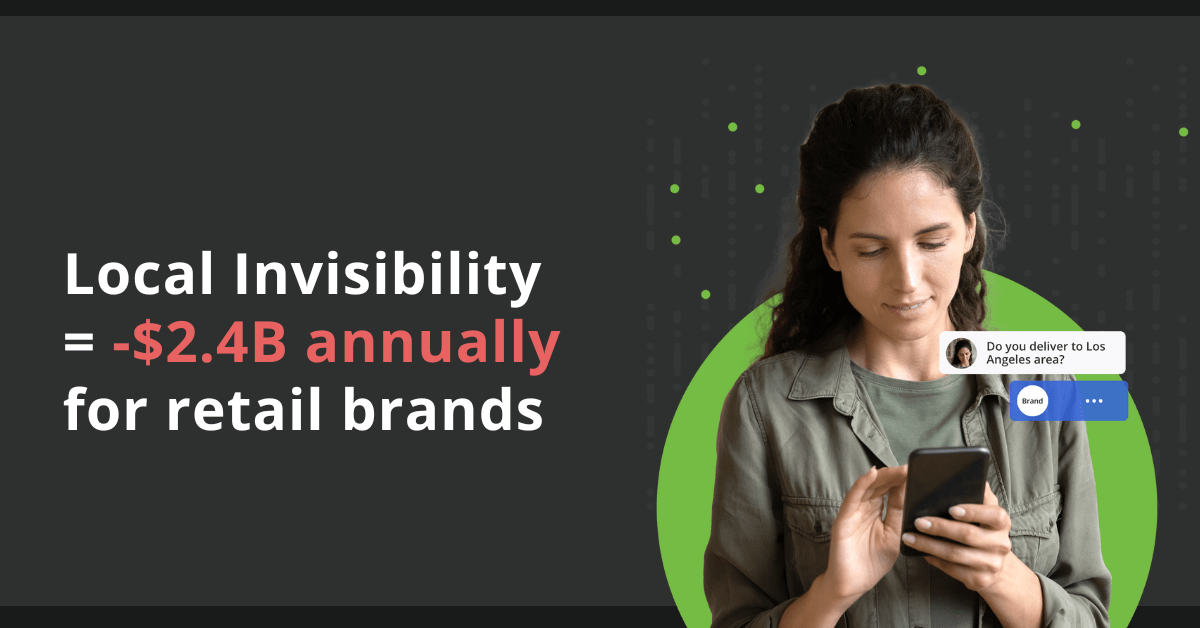
While that number sounds huge, how much does this invisibility cost your multi-location brand? The High Cost of Invisibility for Multi-Location Enterprises white paper dives deeper into how much revenue the average retail brand stands to lose in specific areas of localized marketing, such as search ($17.7 M on average), online reputation management ($5.3 M on average), and local social ($1.1M on average).
The data unequivocally shows that you’re losing out on revenue without a focus on local customers.
Additionally, how much can you increase your revenue if you focus on local engagements with consumers? The white paper explains that the average U.S. retail brand stands to gain $24M, or an estimated average of $58,000 per location, by increasing local consumer visibility.
How to Meet Local Consumers’ Visibility Needs
Now that you understand what consumer invisibility could cost your brand, let’s look into what it takes to improve your customer experience. The High Cost of Invisibility for Multi-Location Enterprises shared the following tactics for improving local visibility.
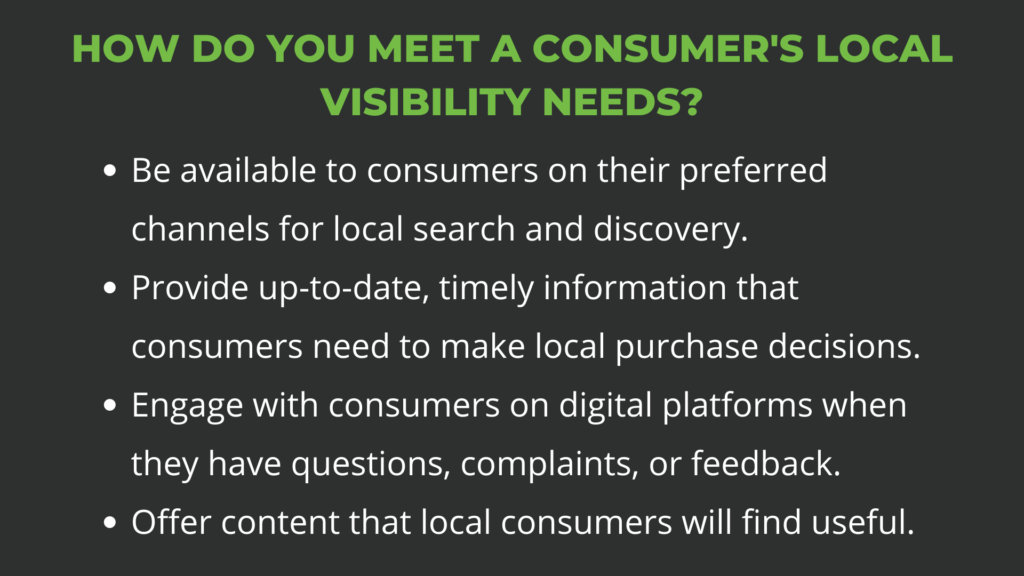
The opportunities for the brands that use the tactics shown above are limitless. The most visible local brands drive four times as many consumer actions (clicks, calls, direction requests) through local digital channels as the average business. Again, ghosting your consumers leads to lost customers and, ultimately, a loss in revenue.
Defining What Good Local Visibility Looks Like
While the tactics above can help you improve your local visibility, wouldn’t having benchmarks to help set attainable goals be helpful? The data from the LVI highlights what leading multi-location enterprises are doing to stand out from competitors in the three categories of local search, online reputation management, and local social. You can use it as a frame of reference for your multi-location business when assessing how to improve your digital marketing efforts.
Below we’ll highlight a few notable metrics, but for a more detailed look at the data, visit our LVI dashboard.
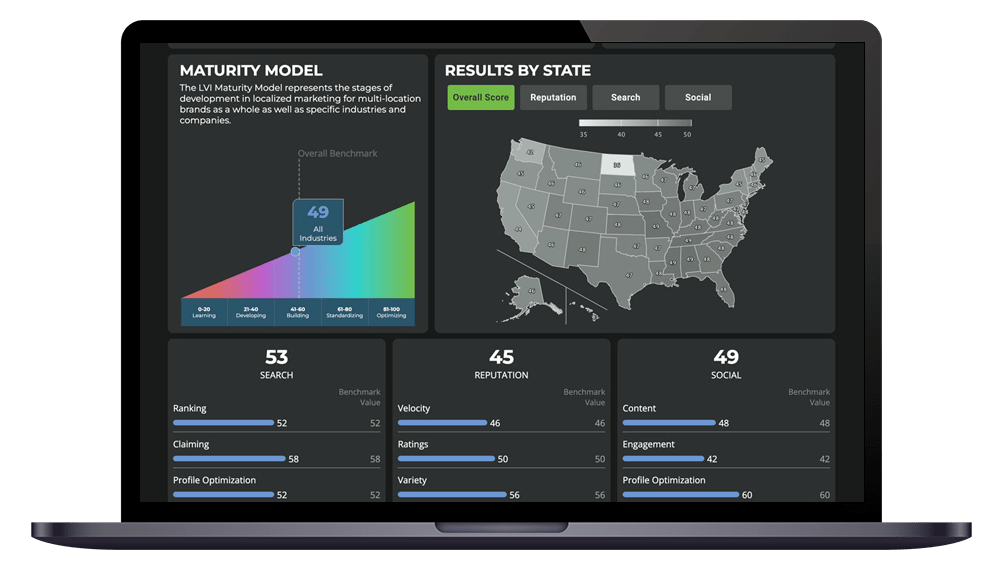
Local Search Metrics:
- Brands now achieve an average of 33.4 percent 3-Pack presence for their most competitive keywords compared to 23.8 percent in 2022.
- Leading brands that are fully optimizing their visibility in search achieved nearly double the visibility in the 3-Pack at 65.7 percent.
Local Social Metrics:
- The average brand location posts on Facebook 9.0 times per month (compared to 7.3 in 2022).
- Brands are leveraging waterfall posts in significant numbers, with 43.3 percent of brands employing waterfall posts at least some of the time.
- Waterfall posting occurs when brands use Facebook tools to copy posts from a corporate profile so that they also appear on local profiles.
Reputation Management Metrics:
- Brands fully optimizing their local reviews are averaging a response time of just 2.2 days, compared to 12.3 days in 2023.
- The average brand now responds to 46.3 percent of its reviews on Google, compared to 36.2 percent in 2022.
For a complete look at the actionable takeaways on how to improve your local visibility in the three categories of local search, social, and online reputation, download the white paper. The full dataset within the guide proves that local visibility is linked to tangible outcomes. If your brand isn’t emphasizing the importance of local, what are you waiting for?
Start Improving Your Enterprise’s Digital Marketing Efforts
Local visibility remains the most significant overlooked opportunity for brick-and-mortar enterprises, which is why this research matters. When a brand optimizes its local visibility, it can incrementally boost organic search rankings, attract and retain loyal customers, and increase the traffic and sales of local businesses, ultimately leading to increased revenue.
While the data is clear, many enterprises still need to optimize their digital marketing efforts at the local level. Why? Because managing a marketing strategy across 100s or 1,000s of business locations can seem daunting. That’s where SOCi comes in.
SOCi was recently named a leading comarketing cloud by Aragon Research. Using advanced artificial intelligence and machine learning, the SOCi Genius platform provides multi-location enterprises with actionable insights and recommendations while automating their most important workflows at scale.
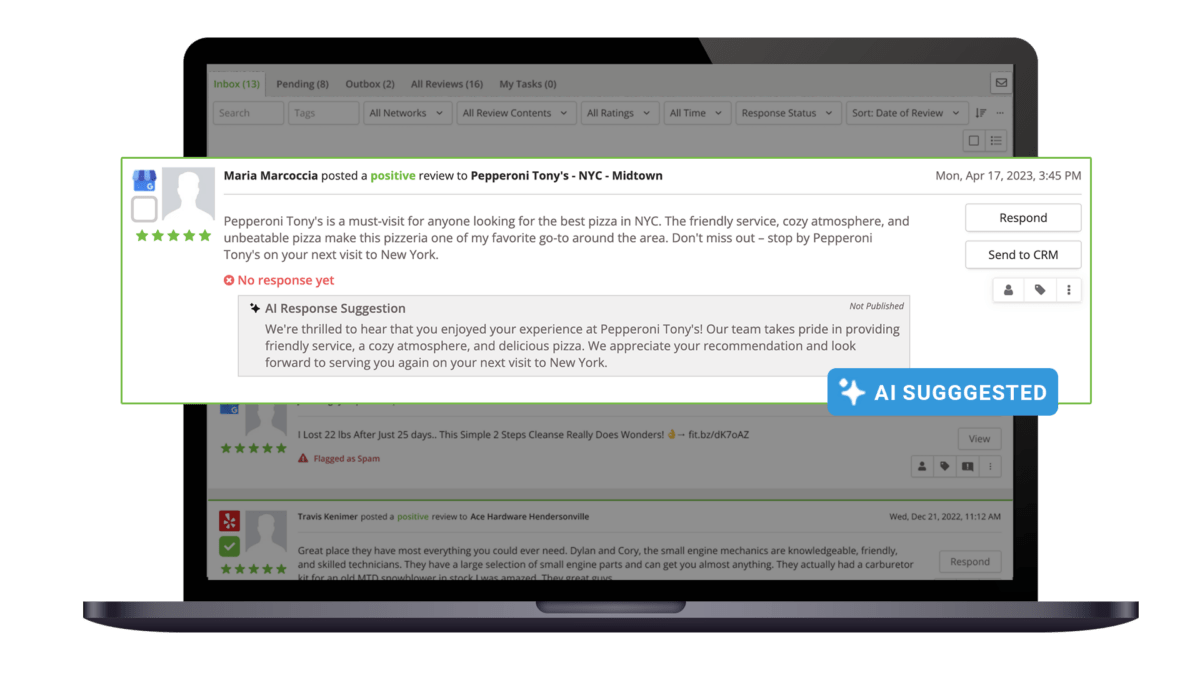
With SOCi, multi-location enterprises can strengthen their digital presence across local search and social pages while protecting their online reputation, driving improved customer engagement, and generating market-leading results. To learn more about SOCi Genius, click here. For additional insight into how SOCi can help you take your localized marketing efforts to the next level, request a demo today!






